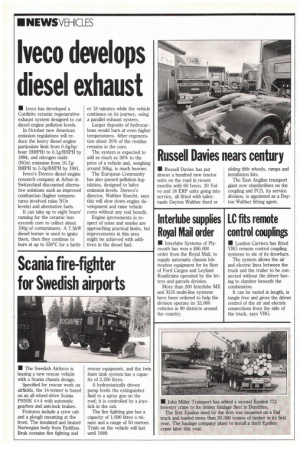New develops diesel exhaust
Page 12

If you've noticed an error in this article please click here to report it so we can fix it.
• Iveco has developed a Cordirite ceramic regenerative exhaust system designed to cut diesel engine pollution levels.
In October new American emission regulations will reduce the heavy diesel engine particulate limit from 0.6g/hp/ hour (BHPH) to 0.1g/BHPH by 1994, and nitrogen oxide (N0x) emission from 10.7g/ BHPH to 5.0g/BHPH by 1991.
Iveco's Dereco diesel engine research company at Arbon in Switzerland discounted alternative solutions such as improved combustion (higher temperatures involved raise NOx levels) and alternative fuels.
It can take up to eight hours' running for the ceramic honeycomb core to collect about 100g of contaminants. A 7.5kW diesel burner is used to ignite them, then they continue to burn at up to 550°C for a furth er 18 minutes while the vehicle continues on its journey, using a parallel exhaust system.
Larger deposits of hydrocarbons would burn at even higher temperatures. After regeneration about 20% of the residue remains in the core.
The system is expected to add as much as 30% to the price of a vehicle and, weighing around 50kg, is much heavier.
The European Community has also passed pollution legislation, designed to halve emission levels. Dereco's director, Walther Knecht, says this will slow down engine development and raise vehicle costs without any real benefit.
Engine iprovements in respect of noise and smoke are approaching practical limits, but improvements in this area might be achieved with additives in the diesel fuel.
















































































































